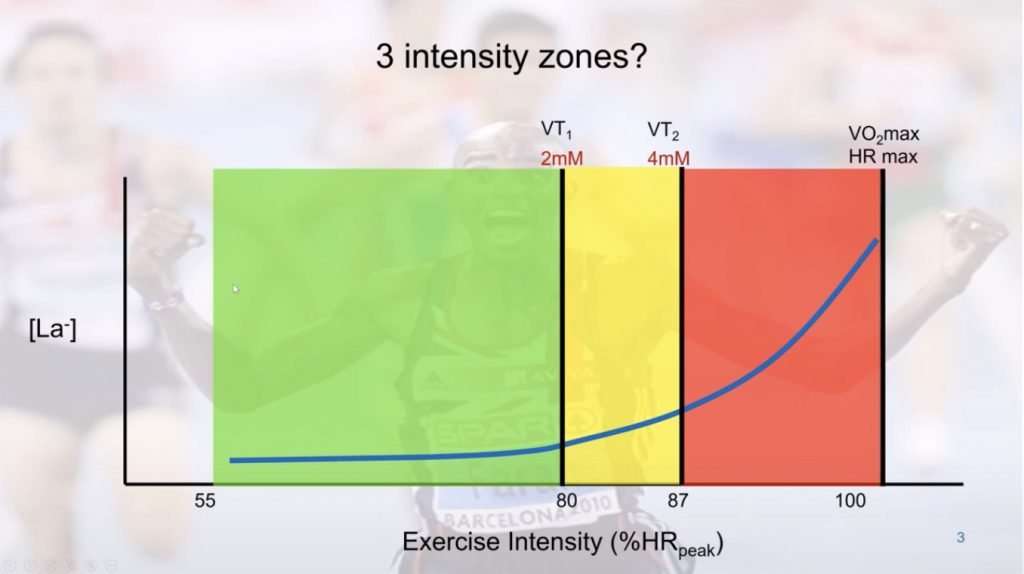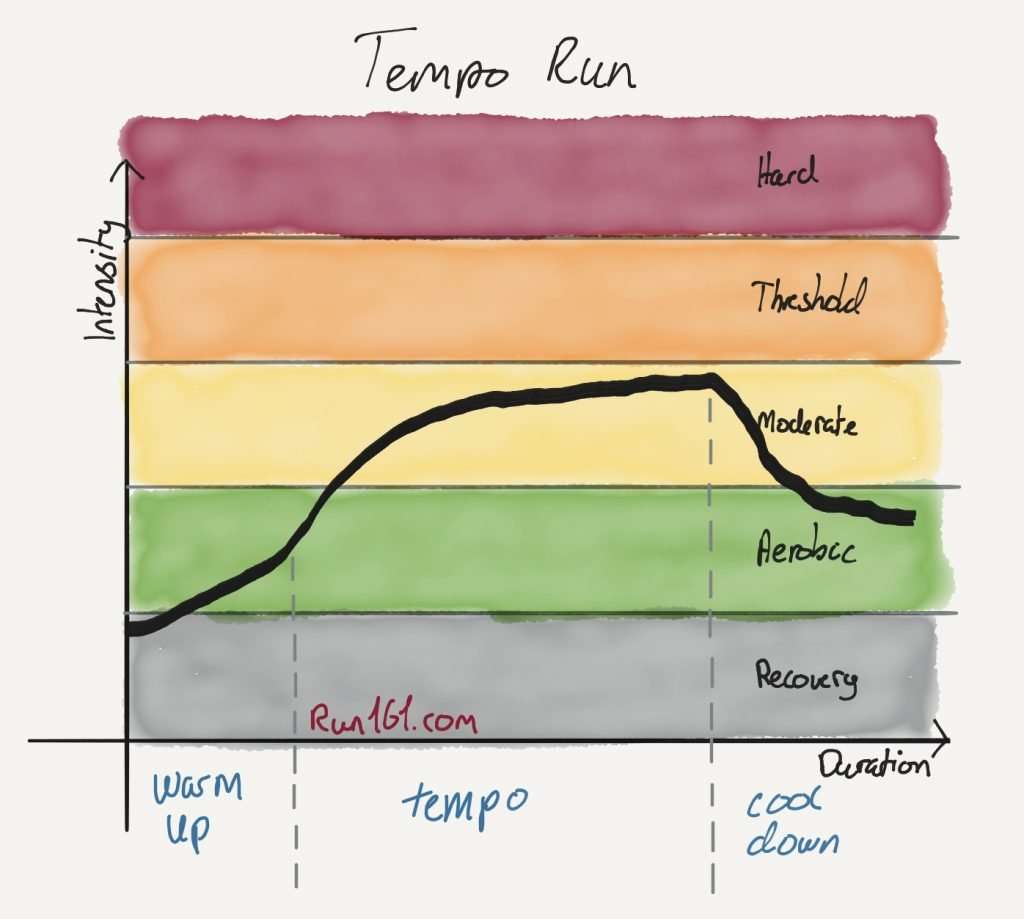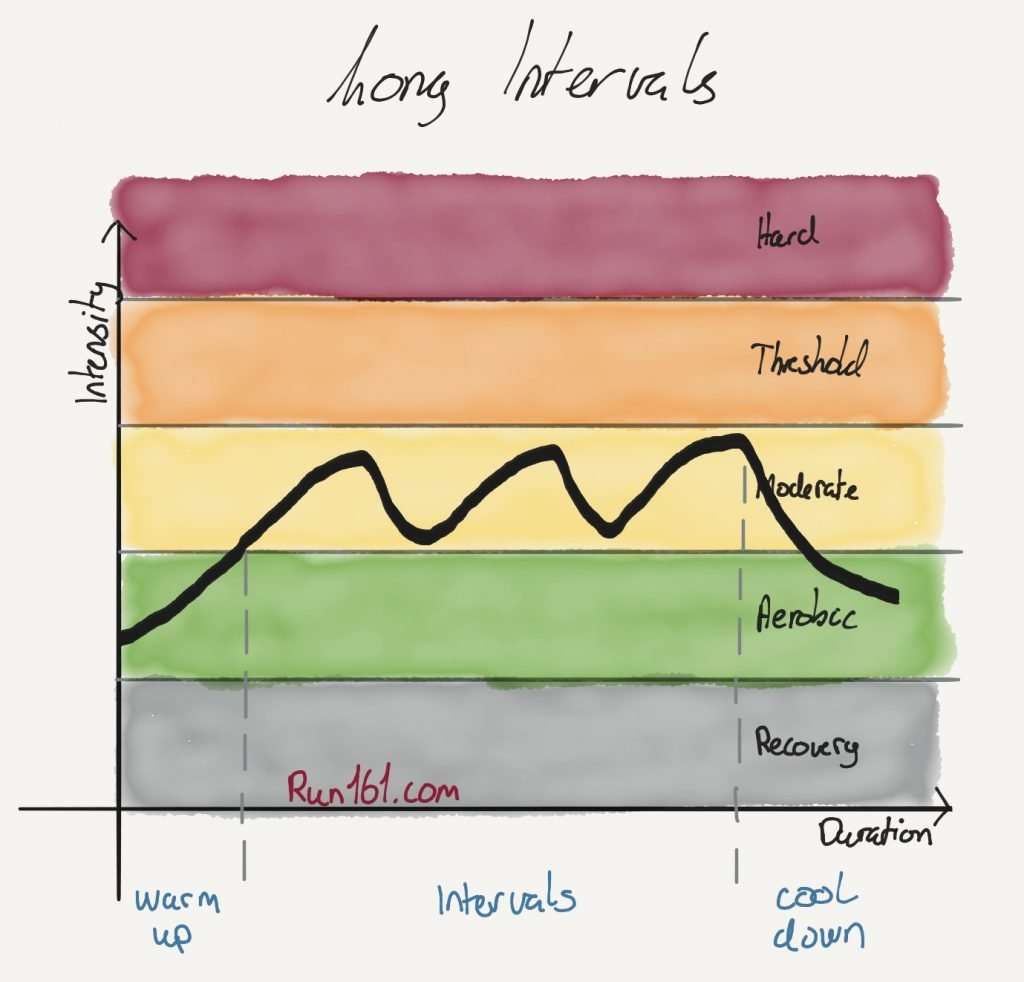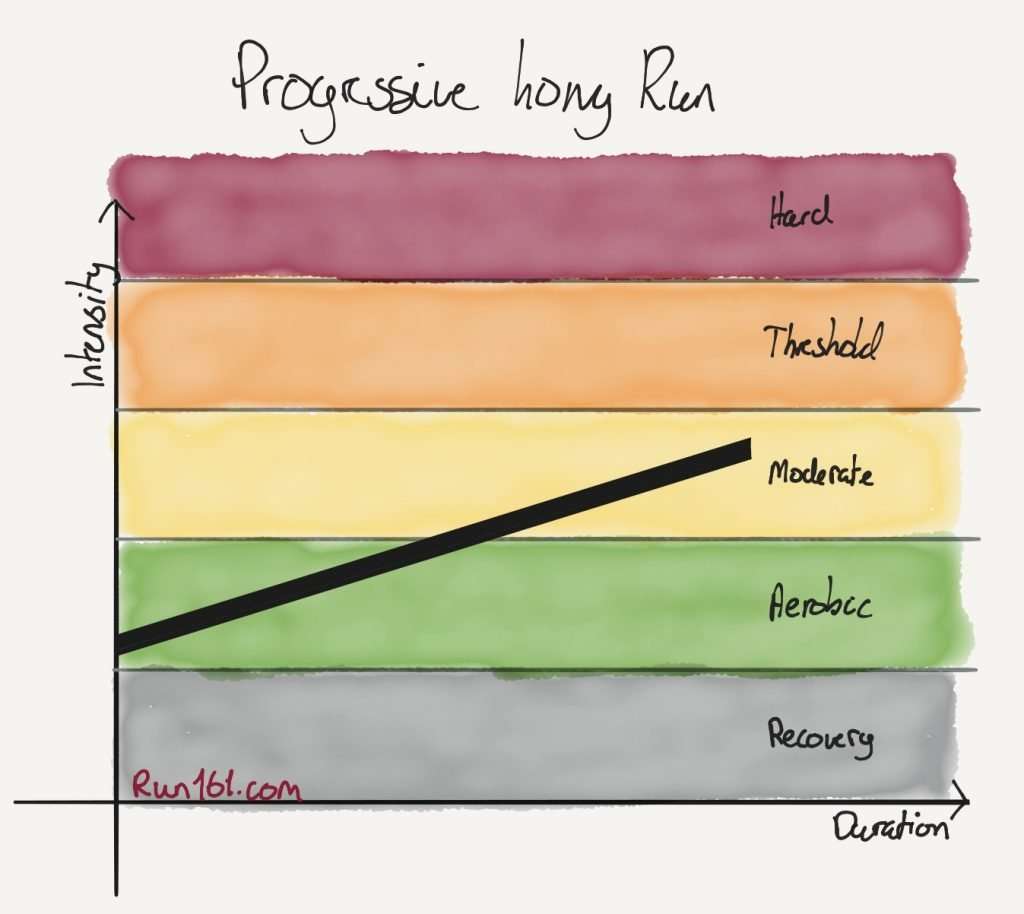Moderate is the most misunderstood running training intensity designation. The primary source of confusion is the many names runners apply to this particular intensity zone. “Steady”, “Tempo” and “Marathon Pace” are just a few examples.
To avoid further confusion, let’s begin with a clear definition of moderate running:
Moderate Running Intensity Definition
– Intensity zone 3 as defined by OLT’s intensity scale •••Running Power is typically between 80-90% of Critical Power
Why Moderate Running Gets a Bad Rap
Spend time discussing training intensity with other runners, and you’ll inevitably face the claim that moderate running is a waste of time. Although not entirely without merit, this assertion is misguided and lacks nuance.
The idea that moderate is no-go originates from the theory of polarised training. Proponents of polarised training hypothesize that training should be easy, or hard. Mind-numbingly easy, or balls-to-the-walls hard. Conversely, you should avoid «moderate» training at all costs.
While polarised training is an established concept, there is much confusion around the term. A quick Google search reveals popular articles presenting contradicting definitions of the training intensity you should look to avoid. By combining the advice from the articles, you’ll end up avoiding training at intensities between 70-85% and above 90%. That doesn’t leave room for a varied training approach, and is obviously incorrect.
What Is Polarised Training?
Exercise physiologist Stephen Seiler — one of the world’s foremost authorities on polarised training — offers some clarification in this presentation on training intensity zones. The three zone approach foundational to polarised training centres around physiological thresholds (first and second ventilatory thresholds):

The general idea behind polarised training is that you want to avoid training in the yellow intensity zone. Instead, your easy day intensity should be in the green zone, and your workouts in the red zone.
However, Seiler’s (often overlooked) research provides important nuance. In the article What is Best Practice for Training Intensity and Duration Distribution in Endurance Athletes? his conclusion with regards to the effects of polarising training between low and high intensity is as follows:
“The idea of a dichotomous physiological impact of HIT and LIT is probably exaggerated, as both methods seem to generate overlapping physiological adaptation proles and are likely complementary.”
After finding a variety of responses to high intensity training in well-trained athletes, Seiler theorised that a large endurance base is necessary to respond well to such changes in training:
“An established endurance base built from high volumes of training may be an important precondition for tolerating and responding well to a substantial increase in training intensity over the short term.”
In other words, the positive effects of highly polarised training are probably exaggerated. And, an elite level endurance base is likely necessary to reap the benefits.
When Does the Moderate Running Intensity Make Sense?
Although there is much misinformation floating around about polarised training, the core tenet is simple, and useful: Make your easy days easy, and train hard on workout days.
But where does moderate training fit in this approach?
Moderate is Not Easy
Not on your easy days. The purpose of an easy day is to facilitate recovery and build aerobic endurance. Because of its comfortably strenuous nature, you can quickly drift into the moderate intensity during these runs.
As a result, you dilute the purpose of the run. The consequence is an increased total workload, and you likely sacrifice your ability to perform during workouts. You can avoid this mistake by wearing a heart rate monitor, or a power meter.
Another, more accessible method, is to watch your breathing, and ability to talk. Once you venture into the moderate zone, your breathing rate will increase above 30 per minute. Similarly, you’ll find it challenging to speak in complete sentences.
Moderate as Part of a Quality Session
Instead, you should consider moderate intensity training a part of your quality work.
There are several benefits to running your quality sessions at the moderate intensity, as opposed to a more demanding zone. Firstly, you can train at a prolonged duration in this zone. A fit runner can maintain this intensity for more than two hours in competition. In this case, an hour long moderate session is entirely reasonable.
Furthermore, as the name suggests, the moderate intensity is not overly demanding. As a result, you’ll recover quickly, and soon be ready for another quality workout. A robust runner who runs six times a week can normally handle three weekly quality sessions within the moderate domain without significant injury risk.
Moderate Is a Staple of Base Training
The characteristics of moderate intensity running makes it a key ingredient of the base training phase. Contrary to popular belief, base training is not merely about running as many easy miles as possible.
During the base phase, the goal is to build a strong endurance base and resilience to the physical demands of training. Paramount to achieving this, is making strides a regular feature of your training week, as well as including a significant amount of lower intensity quality work. In other words, moderate training.
By lowering the intensity of your quality sessions, you will tolerate a higher total volume. Yet, you will see significant fitness improvements compared to only doing easy runs.
Moderate Running Intensity Example Workouts
How do you go about implementing moderate training intensity in your training plan? Going back to the OLT’s description of zone 3, they specify:
“Moderate running is usually executed as interval training, but another option is continuous work in the shape of fast long runs.
Repetitions are usually between 8 and 20 minutes. However, in certain cases rep duration as low as one minute can be appropriate, depending on the purpose of the session.”
In other words, moderate intensity training allows for a wide variety of workout structures. I’m personally particularly fond of the following three sessions. I believe all three can, and should, feature regularly in your training plan throughout the year.
Tempo Run
In the lore of running, no other workout can match the legend of the tempo. Almost every runner has given this session a go, and come up short.

The reason is, of course, that they go out too hard. Your tempo runs should be controlled, and preferably executed in a progressive manner. Work your way into the session, starting out in the lower range of the moderate intensity.
Tempo runs should typically last between 20 and 40 minutes. However, they can last as long as an hour, presuming that you keep the effort level honest and within the moderate range.
Long Intervals
When it comes to bang for buck, or the optimal relationship between workout intensity and fitness gain, long intervals — sometimes referred to as cruise intervals — between moderate and threshold intensity are hard to beat. The idea is that by introducing small breaks, you can run slightly faster without overcooking.

Typically, you will progress the distance / duration of the repetitions throughout a training block. As indicated above, six minutes is a good place to start. For the first few workouts of a training block, I may prescribe as little as four reps. Then, as your fitness improves, you can gradually extend the duration and number of reps.
The rest intervals between the reps should be one to two minutes of easy jogging. An alternative approach is to run so-called «floats» between your repetitions. These are between 500 – 1000 metres long at a slightly slower pace — to the extent that it allows for some recovery.
Progression Long Run
If you aspire to running a fast marathon or half marathon, the progression long run is essential. The combination of time on feet and a faster finish provides the strength and endurance required to run to your potential.

You want to start these runs comfortably, in the lower end of the aerobic range. From there, you gradually increase the intensity. Ideally, the run should last at least 90 minutes. For the last 30 minutes of the run, you should be progressing from the low to the high end of the moderate intensity zone.
Utilise Moderate Training a Well Rounded Training Plan
A varied approach to running training intensity is the key to progress. After reading this, your takeaway should be that moderate intensity training is important for a sustainable approach for long term improvement.
Utilise it to create a strong endurance foundation. Combine high volume at a decent intensity to become a resilient runner. Build the capacity to handle long races, and race-specific training blocks.
Like this?
Let me know by sending me an email at lc@run161.com.
